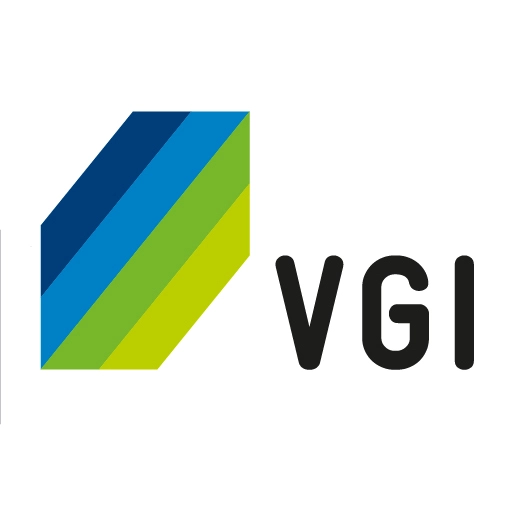VGI newMIND
A new level of public transport services in the Ingolstadt region
The VGI newMIND project aims to use artificial intelligence to analyze and optimize the public transport network and the range of public transport services in the Ingolstadt region. To this end, five different AI projects are examining and implementing detailed and forward-looking approaches to improving public transport, its range of services and its service quality.
Objective/Description
The VGI newMIND project aims to use artificial intelligence to analyze and optimize the public transport network and the range of public transport services in the Ingolstadt region.
To this end, five different AI projects are examining and implementing detailed and forward-looking approaches to improving public transport, its range of services and its service quality.
Data-based analysis and optimization of the public transport network
Knowledge of the mobility needs of potential user groups (especially commuters and schoolchildren) and the alignment of the network with these needs is crucial for assessing the current state of a public transport network and possible optimization approaches. The "Data-based analysis and optimization of the public transport network" project aims to investigate how data on where these user groups live, work and go to school and knowledge of their relevant source-destination relationships and - ideally - patterns and correlations can serve as a basis for AI solutions.
The analysis is intended to show public transport planners which (additional) touchpoints would have a high demand potential and at which touchpoints demand mobility flows intersect at what times and to what extent. A comparison of the existing public transport network with the results of this demand analysis enables the concrete presentation of gaps in demand and supply as well as the identification of weak points and unused potential. It also provides information on the additional public transport utilization potential that could be leveraged by shortening frequencies, express bus lines, tangential lines or bus connections.
Intelligent passenger information
The attractiveness of public transport depends largely on its punctuality and reliability. Reliable, informative passenger information plays an important role in this. Passenger information systems currently in use often only provide static information about bus arrival times. They do not take into account changes in the probable bus arrival time. However, a dynamic real-time estimate, possibly with an interval indication, would be useful for passengers ("bus arrival between 15:02 and 15:06 with 95% certainty").
The "Intelligent passenger information" research project aims to investigate the extent to which an arrival time estimate of the bus arrival time can be realized in combination with an uncertainty estimate of the arrival time based on GPS data of the buses and various AI algorithms.
On the one hand, a prediction model for bus arrival times is being developed that predicts arrival times using a deep learning method such as a neural network, which, depending on the data situation, can even incorporate various prediction variables such as the day of the week, time of day, weather, roadworks, etc.
On the other hand, an AI model for estimating the uncertainties of the bus arrival time prediction is being researched in order to be able to better predict certain deviations or uncertainties from the actual arrival time depending on different times or situations (variance heterogeneity) depending on context factors (time of day, weather, etc.).
Intelligent bus acceleration
Public transport acceleration at traffic lights is an important instrument for increasing the reliability and reducing the travel times of public transport. In competition with motorized private transport, both are important factors for the attractiveness of public transport. The current bus acceleration at traffic lights in Ingolstadt is static and cannot react to current traffic situations, bus delays and occupancy figures. This results in disadvantages for both buses and private transport. These conflicting goals can be balanced out by intelligent bus acceleration, in which AI processes can be used to predict in advance when prioritization should take place. This requires the combination of data and practical experience with research for the development and evaluation of various AI algorithms. The "Intelligent bus acceleration" research project therefore aims to investigate such intelligent bus acceleration. By collecting traffic situation data as well as bus data (occupancy, position and speed, registration status, delay) and traffic signal data, an algorithm for intelligent bus acceleration will be developed and simulatively evaluated using artificial intelligence methods. The aim is to achieve a higher traffic flow for buses while maintaining a balance with private transport, lower CO2 consumption and greater punctuality of buses.
In addition, instructions for a future C-IST-based prioritization of buses and the associated communication between buses and traffic lights will be developed together with all participants as a basis for later implementation in practice. Based on the results, VGI can, depending on the technical consequences, implement appropriate measures at bus stops and intersections in the VGI area both within the project duration and in subsequent years, which do not disrupt the flow of traffic as much as possible and optimize bus travel times.
Digitalization of customer interfaces
The "Digitalization of customer interfaces" project is researching methods and techniques that enable the automated processing of information from public transport for use at digitalized customer interfaces. In particular, cooperative human-machine interactions with natural language play a decisive role here. The research project is helping to ensure that passengers can access and use targeted public transport information at any time. The research results can then also be used in the development of future ticket machines, information systems and personal devices for (future) passengers. This will extend the reach of public transport and improve its acceptance. Ultimately, this will also help to increase the use of public transport.
This involves collecting requirements for the "digitalization of the customer interface" (in particular data on the interaction between people and machines), whereby a distinction is made between text and audio data. Timetables, word lists and formulations are structured semi-automatically. Common speech utterances are recorded and prepared for further processing. This data is used to build a basic system consisting of a component for speech comprehension and one for text comprehension, which in turn consist of individual modules. For example, one module is used for text pre-processing, another for automatic speech recognition. Based on the basic system, the interaction models are then implemented, whereby the dialog guidance and the intelligibility, i.e. the quality and reliability of a speech interaction, are examined. Finally, the multimodal interaction between human and machine is evaluated according to the concepts of "human-centered design".
Scientific support for on-demand transport
In the project "Scientific support for on-demand transport", the planned decisions on on-demand transport are to be evaluated from an economic and customer perspective, and recommendations for the further expansion of on-demand transport are to be made. In order to plan these on-demand services, the issues are to be mathematically modeled in coordination with the methods of operations research. The underlying structure is a so-called route planning problem.





![[Translate to English:] Logo Akkreditierungsrat: Systemakkreditiert](/fileadmin/_processed_/2/8/csm_AR-Siegel_Systemakkreditierung_bc4ea3377d.webp)








![[Translate to English:] Logo IHK Ausbildungsbetrieb 2023](/fileadmin/_processed_/6/0/csm_IHK_Ausbildungsbetrieb_digital_2023_6850f47537.webp)


